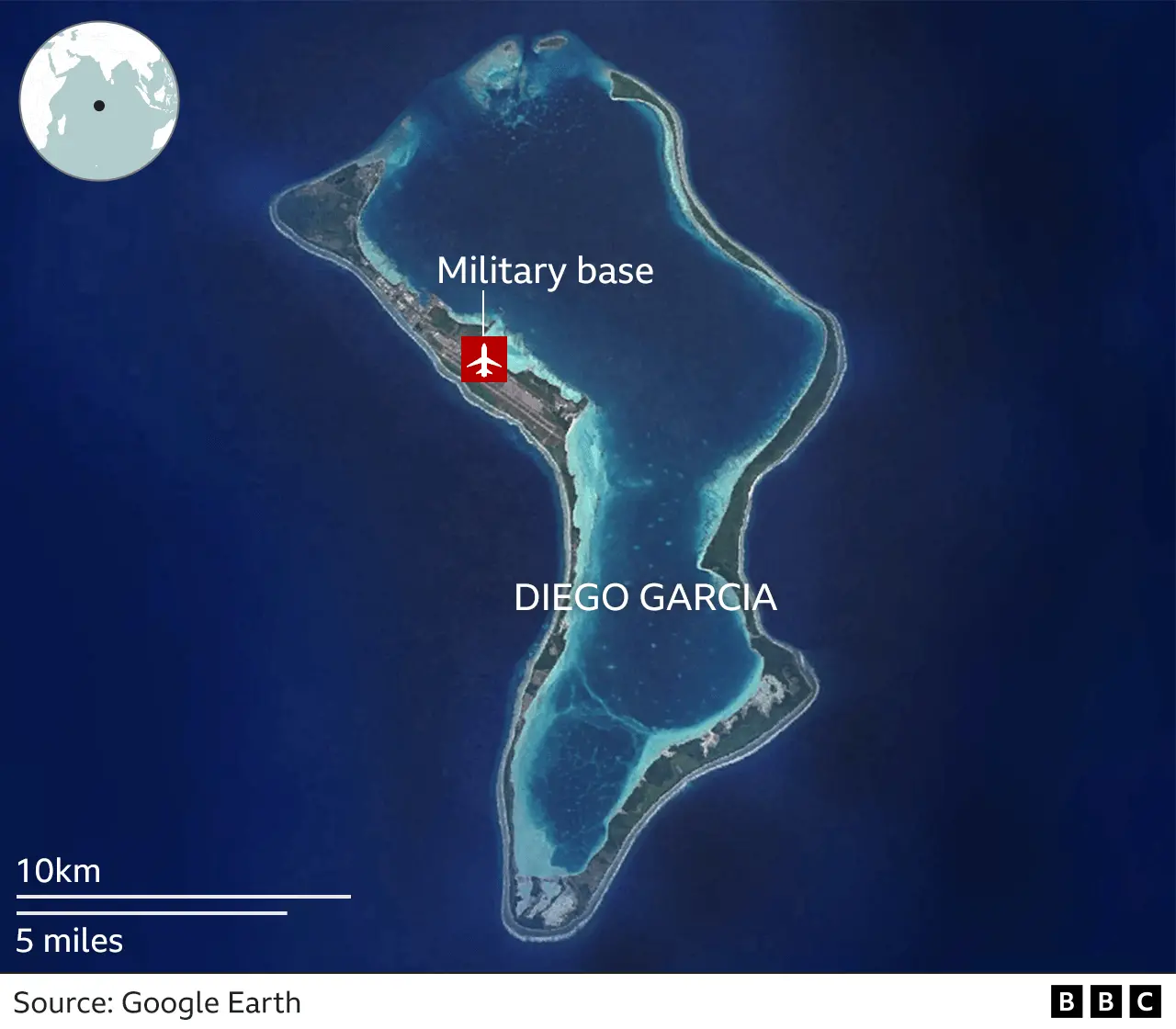US Military Buildup In Northern Europe: A Response To Russia's Threat

Table of Contents
The Growing Russian Threat and NATO's Response
The recent surge in the US military presence in Northern Europe is undeniably linked to Russia's increasingly assertive military actions and policies.
Russia's Military Activities and Assertiveness
Russia's military actions have fueled concerns among NATO members and significantly contributed to the increased US military presence in Northern Europe. These actions include:
- The 2014 annexation of Crimea: This illegal annexation demonstrated Russia's willingness to use force to achieve its geopolitical objectives, shattering the post-Cold War security order.
- Large-scale military exercises near NATO borders: These exercises, often involving advanced weaponry and large numbers of troops, are perceived as intimidation tactics and tests of NATO's response capabilities.
- Aggressive cyber warfare campaigns: Russia has been accused of numerous cyberattacks targeting critical infrastructure and government institutions in NATO member states, undermining their security and stability.
- Support for separatist movements: Russia's support for separatist groups in Eastern Ukraine further destabilizes the region and demonstrates its willingness to engage in proxy conflicts.
This perceived Russian military aggression has heightened anxieties among the Baltic states (Estonia, Latvia, and Lithuania), which share a border with Russia and have historically been vulnerable to Russian influence. Russia's substantial military spending and modernization efforts, surpassing those of many European nations, further contribute to the feeling of insecurity.
NATO's Enhanced Forward Presence (eFP)
In response to Russia's actions, NATO implemented its Enhanced Forward Presence (eFP), a significant aspect of the increased US military presence in Northern Europe. eFP involves the deployment of multinational battalions to Poland and the Baltic states. The US plays a leading role, contributing substantial troop numbers and equipment. These deployments are rotational, ensuring a continuous presence while also allowing for training and logistical flexibility. Other NATO allies also participate, demonstrating collective commitment to the alliance's collective defense. This initiative is designed to deter further Russian aggression through a visible demonstration of NATO's resolve and capability. The rotational nature of these US troops in Europe minimizes the long-term commitment for individual nations while maintaining a credible deterrence posture.
Strategic Importance of Northern Europe
The US military presence in Northern Europe is not arbitrary; it's strategically driven by the region's crucial geopolitical position and resources.
Geopolitical Location and Infrastructure
Northern Europe, especially the Baltic region, holds immense geopolitical significance due to its proximity to Russia and its strategic location along vital sea lanes and airspaces. Control of these routes is crucial for trade, energy transport, and military operations. The region's infrastructure, including ports and air bases, further enhances its strategic value, making it a crucial point for both defense and potential conflict. This makes the region a prime location for enhancing NATO deterrence.
Energy Security and Resource Control
Energy security is another key factor driving the increased US military presence in Northern Europe. The region relies heavily on energy imports, with Russia being a major supplier of natural gas through pipelines crossing several countries. Russia's influence over energy supplies presents a potential tool for geopolitical leverage, which is a major concern for NATO members seeking to diversify their energy sources and reduce their dependence on Russia. This struggle for resource control is directly intertwined with the ongoing geopolitical tensions.
Potential Implications and Future Outlook
The increased US military presence in Northern Europe carries both opportunities and risks.
Escalation Risks and De-escalation Strategies
While the military buildup serves as a deterrent, it also carries the risk of escalation. Miscalculations, accidents, or unintended provocations could lead to a dangerous spiral. Therefore, de-escalation strategies are crucial. Diplomatic efforts, open communication channels, and a commitment to dialogue between NATO and Russia are vital to prevent unintended escalation. International organizations like the OSCE play a significant role in mediating communication and fostering de-escalation efforts. Finding diplomatic solutions requires a complex interplay of military deterrence and meaningful diplomatic engagement.
Long-Term Impacts on Regional Stability and Defense Spending
The long-term effects of this military buildup on regional stability are complex and uncertain. While it could deter aggression, it could also lead to a prolonged period of heightened tension, and the potential for increased defense spending by Northern European countries. This could lead to a new European security architecture, profoundly altering the regional balance of power and potentially diverting resources from other vital sectors.
Conclusion
The increased US military presence in Northern Europe is a multifaceted response to Russia's assertive actions. The strategic importance of the region, encompassing its geopolitical location and energy security, necessitates this military buildup to deter aggression and maintain stability. However, the potential for escalation highlights the critical need for sustained diplomatic efforts and de-escalation strategies. Understanding the complexities surrounding the US military presence in Northern Europe is essential for informed discussion and future policy decisions. Continue to stay informed about developments regarding the US military presence in Northern Europe and its impact on global security.

Featured Posts
-
 Jawa Tengah 26 Maret 2024 Update Cuaca Semarang Dan Prediksi Hujan
May 28, 2025
Jawa Tengah 26 Maret 2024 Update Cuaca Semarang Dan Prediksi Hujan
May 28, 2025 -
 Kanye West And Bianca Censori Analyzing Fan Response To Public Appearances
May 28, 2025
Kanye West And Bianca Censori Analyzing Fan Response To Public Appearances
May 28, 2025 -
 Nba 2 K25 Pre Playoff Update Features Significant Player Rating Adjustments
May 28, 2025
Nba 2 K25 Pre Playoff Update Features Significant Player Rating Adjustments
May 28, 2025 -
 Abd De Tueketici Kredileri Beklentileri Gecti
May 28, 2025
Abd De Tueketici Kredileri Beklentileri Gecti
May 28, 2025 -
 Lotto Jackpot Winner Location Announced E1 Million Prize Unclaimed
May 28, 2025
Lotto Jackpot Winner Location Announced E1 Million Prize Unclaimed
May 28, 2025
Latest Posts
-
 Tune In Jayne Hinton And Sundae Servings On Bolton Fm
May 30, 2025
Tune In Jayne Hinton And Sundae Servings On Bolton Fm
May 30, 2025 -
 Self Titled Album Launch Kae Tempest Announces Uk And Eu Tour
May 30, 2025
Self Titled Album Launch Kae Tempest Announces Uk And Eu Tour
May 30, 2025 -
 Bolton Fms Sundae Servings With Jayne Hinton Show Schedule And Guest Information
May 30, 2025
Bolton Fms Sundae Servings With Jayne Hinton Show Schedule And Guest Information
May 30, 2025 -
 Listen Live Jayne Hintons Sundae Servings On Bolton Fm
May 30, 2025
Listen Live Jayne Hintons Sundae Servings On Bolton Fm
May 30, 2025 -
 Uk And Eu Tour Dates Revealed Kae Tempests Self Titled Album
May 30, 2025
Uk And Eu Tour Dates Revealed Kae Tempests Self Titled Album
May 30, 2025
